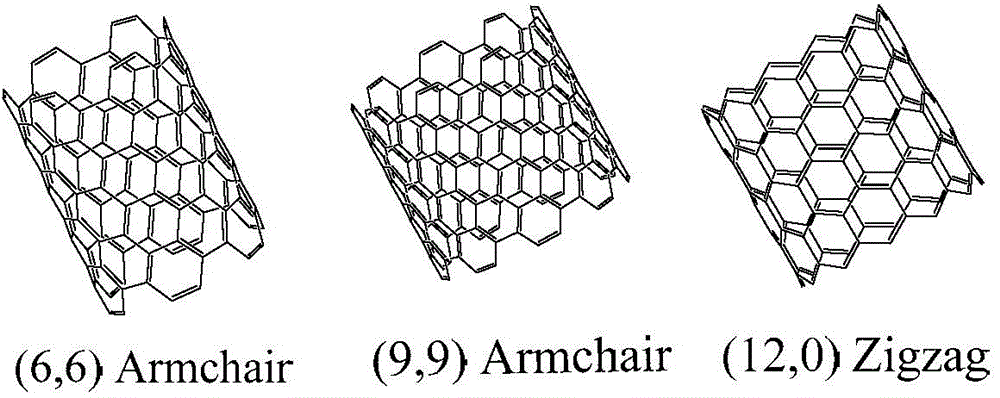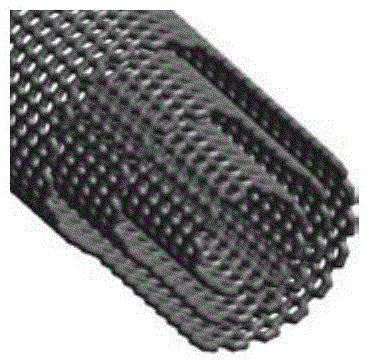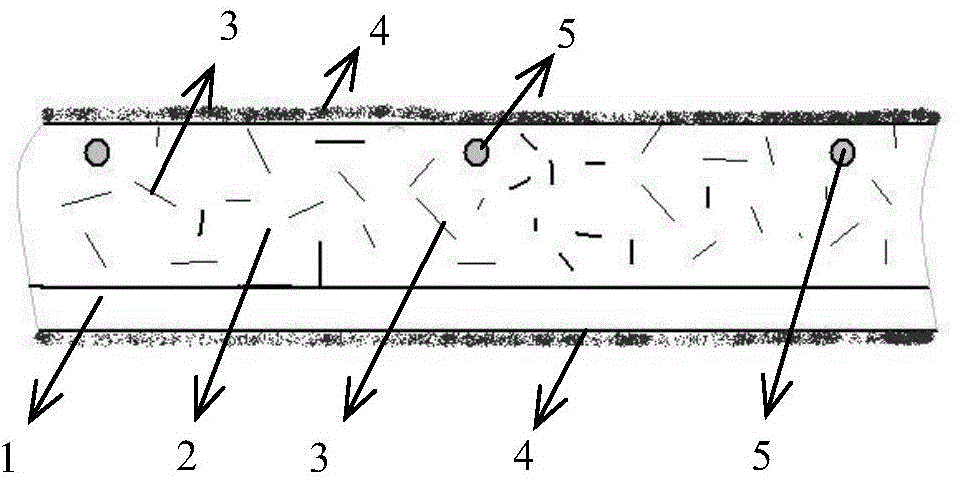Carbon-nanotube-modified high-current-density perfluorinated ion exchange membrane and preparation method thereof
A carbon nanotube modification, perfluorinated ion technology, applied in the direction of diaphragm, electrolysis process, electrolysis components, etc., can solve problems such as strength reduction, and achieve the effect of reducing cell voltage, increasing strength, and reducing transmission resistance
- Summary
- Abstract
- Description
- Claims
- Application Information
AI Technical Summary
Problems solved by technology
Method used
Image
Examples
Embodiment 1
[0046] (1) Preparation of resin pellets
[0047] Perfluorosulfonic acid resin is obtained by in situ polymerization of tetrafluoroethylene and perfluoro 3,6-dioxa-4-methyl-7-octenesulfonyl fluoride in the presence of fluorinated modified single-walled carbon nanotubes The powder has an ion exchange capacity of 0.98mmol / g, and the single-walled carbon nanotubes are (6,6)-type single-walled tubes with a length of 5-15 microns and a mass content of 4.3%. The perfluorocarboxylic acid resin used is a powder obtained by copolymerization of tetrafluoroethylene and perfluoro 4,7-dioxa-5methyl-8-nonenoic acid methyl ester, and the ion exchange capacity is 0.94mmol / g. The perfluorosulfonic acid resin powder and the perfluorocarboxylic acid resin powder are melt-extruded and granulated to obtain respective pellets.
[0048] (2) Membrane preparation and reinforcement
[0049] Using the above-mentioned perfluorocarboxylic acid resin pellets and perfluorosulfonic acid resin pellets contai...
Embodiment 2
[0054] (1) Preparation of resin pellets
[0055] Perfluorosulfonic acid resin is a powder obtained by copolymerization of tetrafluoroethylene, hexafluoropropylene and perfluoro 3,6-dioxa-4-methyl-7-octenesulfonyl fluoride, and its ion exchange capacity is 1.08mmol / g , the (9,9) type, single-walled carbon nanotubes with a length of about 40 microns and the above-mentioned perfluorosulfonic acid resin powder (mass ratio 10:100) were thoroughly mixed, and then melted and extruded to obtain full carbon nanotube-containing carbon nanotubes. Pellets of fluorosulfonic acid resin. The perfluorocarboxylic acid resin used is the powder obtained by the copolymerization of tetrafluoroethylene and perfluoro-4,7-dioxa-5-methyl-8-nonenoate methyl ester, the ion exchange capacity is 0.95mmol / g, and it is melt-extruded Go out and granulate to obtain the pellet of perfluorocarboxylic acid resin.
[0056] (2) Membrane preparation and reinforcement
[0057] Using the above-mentioned perfluoroc...
Embodiment 3
[0062] Step (1), step (2) and step (3) are the same as in Example 1, except that the carbon nanotubes in step (1) are (12,0) single-walled carbon nanotubes.
[0063] The prepared ion membrane tensile strength of the present embodiment is 32MPa, can be used for the ion exchange membrane in the chlor-alkali ion membrane electrolyzer, at 6.5kA / m 2 Under the current density, the mass ratio concentration of the cathode NaOH solution is 32%, the concentration of the anode brine entering the tank is 305g / L, the concentration of the brine leaving the tank is 212g / L, the tank temperature is 85-87°C, the active cathode is under the conditions of 1mm pole distance Test, the cell voltage is 3.10-3.13V, and the current efficiency is 96.9%.
PUM
| Property | Measurement | Unit |
|---|---|---|
| Tensile strength | aaaaa | aaaaa |
| Tensile strength | aaaaa | aaaaa |
| Tensile strength | aaaaa | aaaaa |
Abstract
Description
Claims
Application Information
 Login to View More
Login to View More - R&D
- Intellectual Property
- Life Sciences
- Materials
- Tech Scout
- Unparalleled Data Quality
- Higher Quality Content
- 60% Fewer Hallucinations
Browse by: Latest US Patents, China's latest patents, Technical Efficacy Thesaurus, Application Domain, Technology Topic, Popular Technical Reports.
© 2025 PatSnap. All rights reserved.Legal|Privacy policy|Modern Slavery Act Transparency Statement|Sitemap|About US| Contact US: help@patsnap.com



